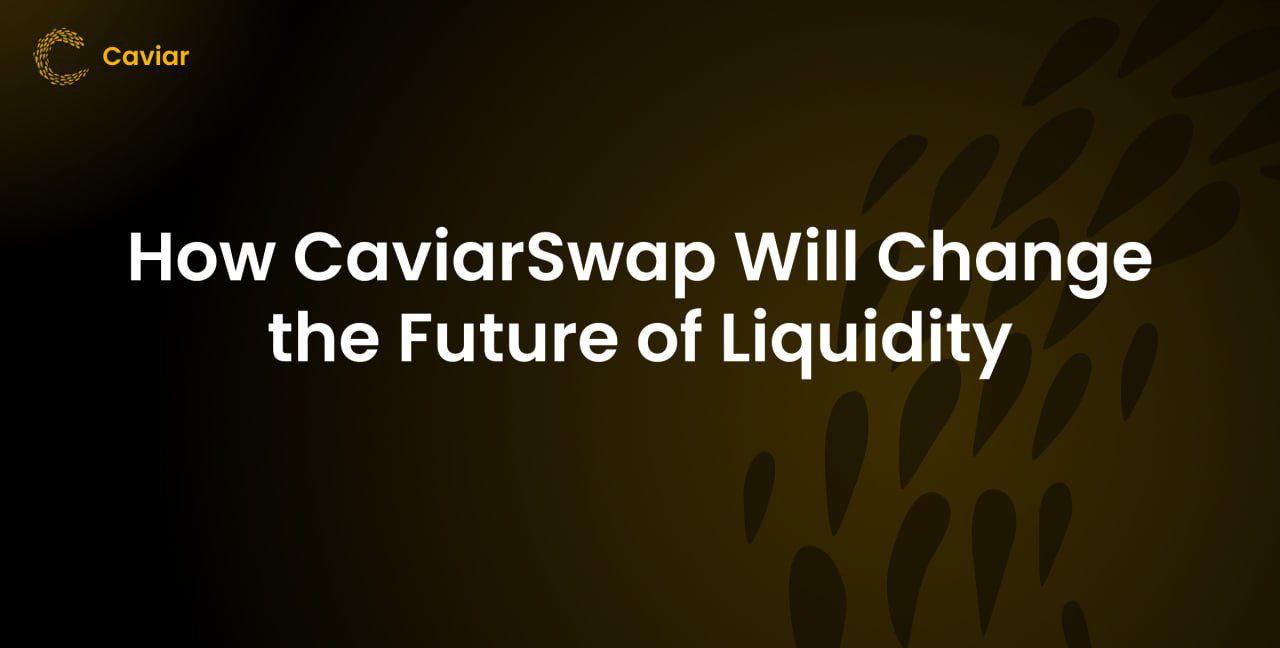The CaviarSwap protocol is a DeFi dApp built on the Radix network. Right now, CaviarSwap operates as a centralized demo prototype. But the goal of the platform is to become a decentralized exchange that provides a safe and capital-efficient way for users to swap assets in a complete peer-to-peer environment.
While the use case of CaviarSwap itself is exciting, the real reason why this exchange may change the future of liquidity is because of the entire package. CaviarSwap is built on the Radix network. This means it’s built on an asset-oriented virtual machine that makes reusability, composability and security a foregone conclusion.
Building on the Radix engine means that the network is immune to most kinds of hacks. The message-oriented nature of the EVM engine ensures that hackers can always exploit the engine’s logic. For example, hackers could send tokens to exchanges to mess up with current balances on smart contracts and drain the protocol of funds.
CaviarSwap has no such limitations because it’s built on an asset-oriented network that understands what assets are. This also means that users don’t have to blind-sign contracts, since the network can tell them what would happen if the contract is implemented. That alone removes a lot of the risk of hacks.
But that’s just the Radix engine. CaviarSwap itself has enough functionalities to make it the future of liquidity, even as a standalone protocol.
However, we ought to know who’s behind the dApp first.
Who Is Behind CaviarSwap?
The CaviarSwap protocol was founded by Oliver Scott Simons and Chris Colman.
Oliver has a degree and masters in Mathematics from Imperial College London. He’s also had a pretty successful 14-year career at top-tier 1 banks.
At the banks he worked at, Oliver mostly ran derivatives and exotic derivatives trading desks. It was during this career that he developed a passion for innovation, hedging strategies, and computer systems. This passion led him to build a private algorithmic trading business with Chris. The business was called Invariance.
Chris Colman didn’t spend 14 years in banking like Oliver. Instead, he spent 8 years at Cambridge where he got a degree in physics and theoretical physics. This was followed by a graduate course in Computer science and a PhD in Physics.
After schooling, he decided to go into banking. He got a job at Barclays and worked as a managing director for the bank for a while.
In time, both Chris and Oliver got bored with their jobs. Oliver was frustrated by the lack of innovation in traditional finance, and Chris wanted to do something entrepreneurial.
Both men eventually went into studying deep learning and crypto in order to satisfy their needs. They soon decided to work together permanently after working on so many projects together. It was this relationship that gave birth to CaviarSwap.
What Is CaviarSwap?
CaviarSwap is a liquid pool decentralized exchange that’s aiming for the number one spot in the crypto ecosystem. The goal is to provide a safe swapping experience that’s a great entry point for new DeFi users.
The idea of the decentralized exchange is vital to crypto. It’s the idea that users from around the globe can come together to swap assets without a third party. It’s the very idea of a digital market coming to life.
However, DEXs in the crypto ecosystem have had their own problems. The biggest problem, of course, has to be security. Last year alone, DEXes like Maiar and Rubic lost millions of dollars to hacks.
CaviarSwap’s Unique Selling Point
Asides from safety, a lot of these DEXs have scalability problems. CaviarSwap’s selling point is that it solves these twin problems of scalability and safety quite easily.
But even those two selling points — as vital as they are, are also just by the way. The real unique advantage that CaviarSwap has is that it allows users to provide single token liquidity.
Liquidity pools, generally speaking, have pairs of assets. This means that users must provide two assets in equal quantities according to the pool’s exchange rate. In practice, it means that someone who wants to deposit Ethereum into a pool must deposit an equal value of another asset, like USDT.
This process is unnecessarily cumbersome. Despite how cumbersome this process is for users, many liquidity pools simply don’t care. Users either put up or find other pools.
The great thing about the CaviarSwap protocol is that it does away with this requirement entirely. With CaviarSwap, users can now provide single pool liquidity. This guarantees better capital efficiency and is simply an all-around easier experience for users.
Why Should You Use CaviarSwap
There are two major advantages for users of CaviarSwap. The first advantage is that users get to earn more for the liquidity they add because they only need to stake one token.
The second is that they gain full control of the exposure they have to other tokens in the pool. Why should liquidity providers be forced to be exposed to two tokens when they provide liquidity in just one?
Unlike other DEXes, CaviarSwap has an extremely clean UX that makes adding liquidity simple. Users who add liquidity to the pool also get a share of the transaction fees generated by the pool.
According to the CaviarSwap protocol, 80% of all transaction fees on trades go to liquidity providers. The rest goes to FLOOP (the CaviarSwap token) stakers.
CaviarSwap combines a unique blend of the solutions DeFi liquidity is searching for (safety, scalability, and capital efficiency) into one portable dApp. In due time, CaviarSwap may become the safest, most scalable, and most user-friendly DEX on the market. If it does become that, it would have changed the future of liquidity forever.



































